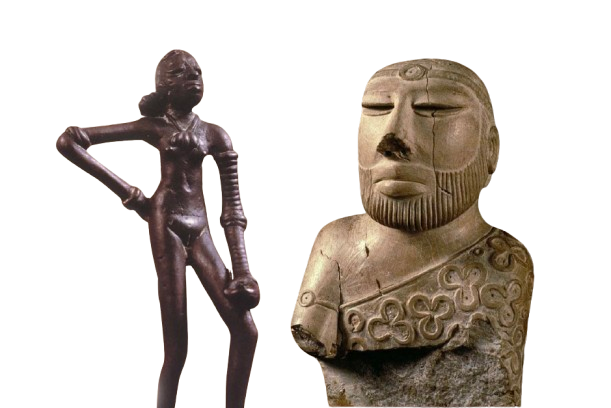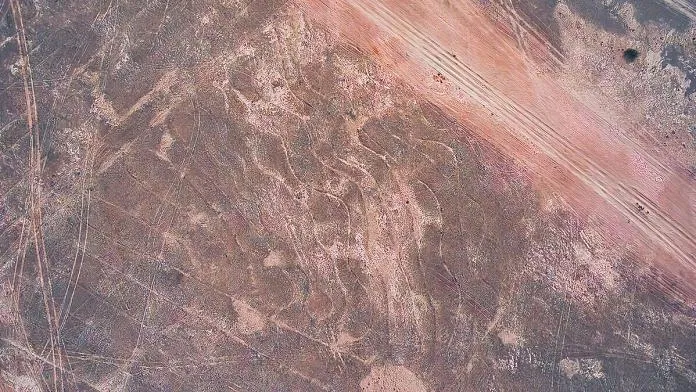The Harappan civilization, also known as the Indus Valley Civilization, has left behind some of the most intriguing artifacts that offer a glimpse into its rich cultural heritage. Two of the most famous artifacts from this ancient civilization are the “Bearded Man” and the “Dancing Girl,” each of which holds significant historical and artistic value.
The Bearded Man
The “Bearded Man,” also known as the “Priest-King,” is one of the most iconic sculptures discovered in Mohenjo-Daro, one of the major urban centers of the Harappan civilization. This small, seated figure, carved from steatite (soapstone), portrays a man with a dignified and calm expression. He wears a headband decorated with a trefoil pattern, a robe draped over his left shoulder, and a carefully groomed beard, which gives the figure its popular name.
The Bearded Man’s intricate features, such as the half-closed eyes, well-defined facial hair, and the elaborate robe, suggest that this figure may have represented a person of high status, possibly a ruler or a priest. The peaceful expression on his face and the calmness conveyed by the sculpture are often interpreted as signs of a philosophical or religious figure, leading to speculations about the spiritual life of the Harappans. Although there is no conclusive evidence about the exact identity or role of this figure, the “Bearded Man” remains an enduring symbol of the artistic and cultural sophistication of the Indus Valley Civilization.
The Dancing Girl
The “Dancing Girl” is another celebrated artifact from the Harappan civilization, discovered in Mohenjo-daro. This bronze statuette, standing about 10.5 cm tall, depicts a young girl in a confident and dynamic pose, with one hand resting on her hip and the other arm dangling freely. Her posture, with one leg slightly bent and the other extended, suggests movement, as if she is in the middle of a dance.
What makes the “Dancing Girl” particularly remarkable is the realism and expressiveness captured in such a small figure. She is adorned with bangles on her arms, which add to her sense of movement, and her hair is styled in a way that suggests care and attention to personal grooming. The figure’s youthful, confident expression has led to interpretations that the Harappans had a vibrant cultural life that included dance and music as forms of expression and entertainment.
The “Dancing Girl” is often cited as evidence of the advanced metallurgical skills of the Harappans, as bronze casting requires a high level of technical expertise. This statuette not only showcases the artistic abilities of the Harappans but also offers a glimpse into the social and cultural life of the time, suggesting that women played an active role in the public or ceremonial life of the society.
Together, the Bearded Man and the Dancing Girl provide valuable insights into the sophistication of the Harappan civilization, reflecting its artistic achievements, social structures, and cultural practices. These artifacts remain among the most cherished relics of one of the world’s earliest urban civilizations.



